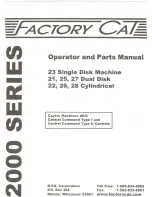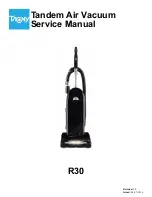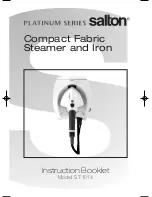
13
ENGLISH
(Original instructions)
EN
7.2 Start-up
7.2.1 Dry suction. See fig. 9.
Only work with the filters (B2 - B10) dry! Before using them,
check the filters for damage and replace them if necessary.
To suck up dry dirt, adjust the floor nozzle as appropriate
and fit the corresponding accessories (Use the brush B6a).
When sucking up dry dirt, if necessary an additional filter
bag, which may be in fabric (B10) or in paper (optional),
may be used.
Filter bag guidelines
- The level to which the filter bag is filled depends on the
type of dirt being collected.
- For fine dust, sand, etc., replace the filter bag often.
- A worn filter bag may burst, so it should be replaced in
good time!
Warning - danger!
Cold ash must only be sucked in using a pre-separator.
7.2.2 Sucking in liquids See fig.10.
Warning - danger!
If foam forms or liquid overflows, switch the appliance off at
once or disconnect the mains plug! Do not use a filter bag
(either paper or fabric)!
Warning
When the tank is full, a float switch shuts off the suction
inlet and the motor starts to race. Switch the appliance off at
once and empty the tank.
To suck up damp or dry dirt, adjust the floor nozzle
as appropriate and fit the corresponding accessories
(Use the brush B6b).
7.2.3 Working with power tools. See fig 11.
The assembly sequence is illustrated in fig.11.
For appliances with integral power socket: connect the power
tool plug to the socket on the appliance.
Switch on the appliance (master switch turned L to
)
and start working.
Warning: as soon as the power tool switches on, the suction
fan starts up after a 0.5 second delay.
When the power tool is switched off, the suction fan keeps
running for about a further 6 seconds to suck up the dirt left
in the suction hose.
7.2.4 Blower function. See fig 12.
For cleaning inaccessible points or where suction is not
possible, such as removing leaves from gravel.
Fit the suction hose to the connection provided. The blower
function is now active.
For more effective blowing, use of the nozzle B8 is
recommended.
7.3 Stopping operation (Pauses)
Switch off the appliance. See fig. 8.
Connect the floor nozzle in the stowed position.
7.4 Finishing work
Switch off the appliance. See fig. 8.
Disconnect the plug.
7.5 Empty the tank
For dry dirt and dust: remove the nozzle from the appliance and empty
the tank. See fig 13.
For liquids: use the drain screw. See fig 14.
8 MAINTENANCE (PAGE 6)
Warning - danger!
All installation and assembly operations must be performed with the appliance
disconnected from the mains power supply.
The assembly sequence is illustrated on page 6.
Always switch the appliance off and disconnect the plug before any servicing
or maintenance work. Repairs and work on electrical systems may only be
carried out by the authorised customer service.
Warning - danger!
Never use abrasive detergents, glass detergents or universal detergents!
Never immerse the cover of the appliance (A1) in water.Clean the appliance
and plastic accessories with a standard synthetic material detergent.Rinse
the tank and accessories with water if necessary and dry them before reuse.
8.1 Cleaning the filter See fig 15.
Open the vacuum-cleaner by releasing the catches (A6). Turn the
cover of the appliance (A1) upside down and remove the filters B1
and B2.
Rinse carefully under running water and leave to dry. Do not
reassemble until dry.
8.2 Cleaning the fabric filter See fig 16.
Open the vacuum-cleaner by releasing the catches (A6). Remove the
filter B10.Empty the filter, rinse carefully under running water and leave
to dry. Do not reassemble until dry.
8.3 Replacing the paper filter (optional) See fig 17.
Open the vacuum-cleaner by releasing the catches (A6). Remove the
full filter, throw it away and fit a new one.
9 END-OF-SEASON STORAGE (PAGE 6)
Warning - danger!
All installation and assembly operations must be performed with the appliance
disconnected from the mains power supply.
After finishing work, clean the appliance and then put it and the accessories
away as shown in fig.18.
Store the appliance in a dry place.














































